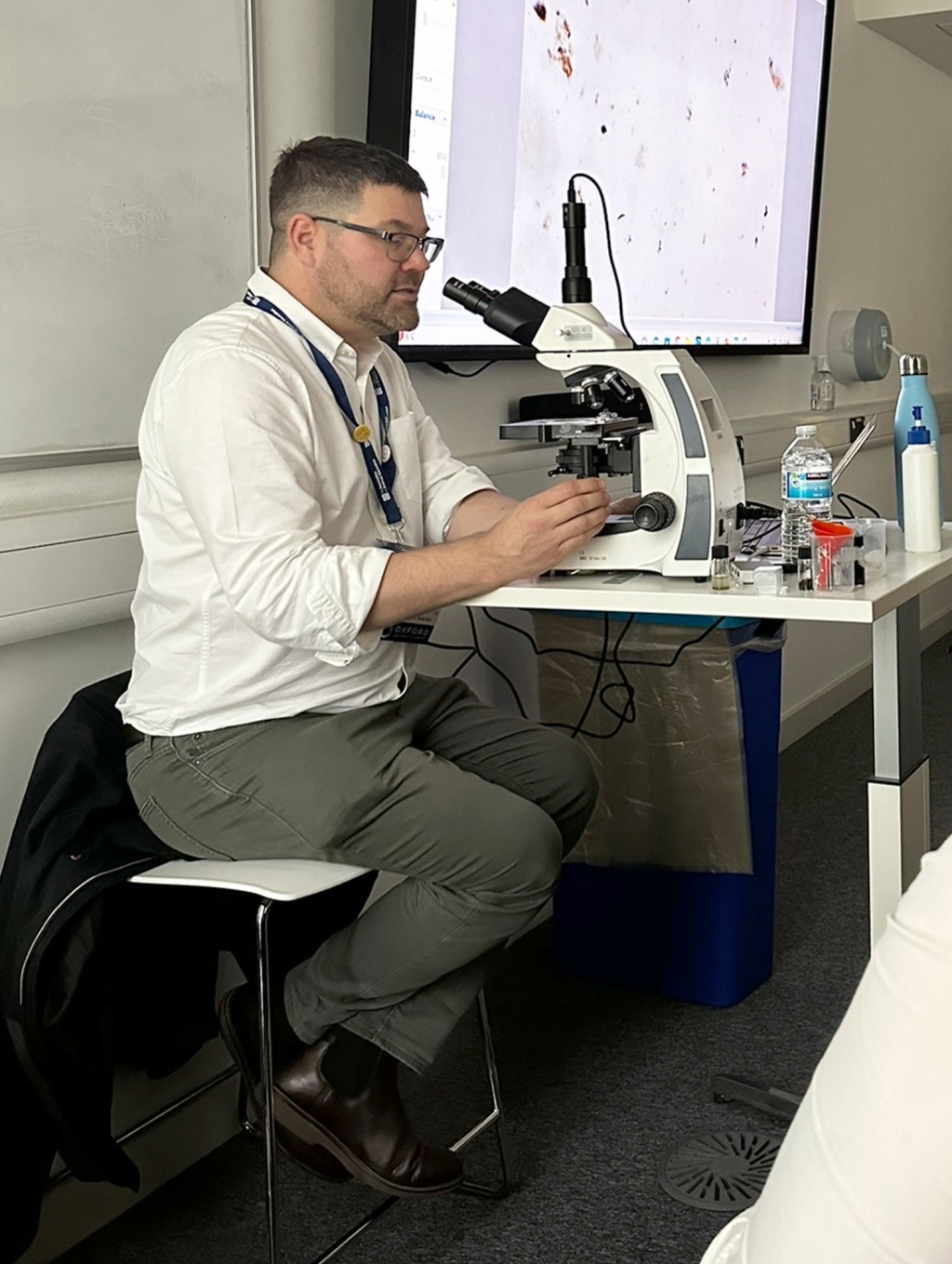Nothing says the start of a New Year more than attending the Association for Science Education annual conference. This year at the moss and lichen rich campus of Northampton University. This is my 12th consecutive year of attending the conference (even during Covid I did some online sessions). Last year I introduced Moss Safari to fellow biology educators, this year I did a Live Moss Safari session. I don’t take much encouragement to talk about Moss Safari, but it seemed to me that everyone was talking about about Moss Safari anyway! Word has got out.
The Exhibition
The ASE Conference is well know for its big exhibition with lots of stands from the amazing science education community. This year Moss Safari featured on the dazzling Vitta Education stand with a fantastic roller poster of Moss Safari itself! However, going around the stands, I was able to talk to CLEAPSS who were doing a Moss Safari as one of their Biology Practicals, meeting several Twitter/X followers for the first time who are advocates of Moss Safari.
The Session: Moss Safari Live
It’s always great to have a packed out room, to the point we got told off and that we were unable to fit anymore people in! There was a lot of enthusiasm to go on a Live Moss Safari. As always its a bit unpredictable about what we will find. I brought a sample that was rich in life a week or so ago, but it was sadly quite inactive. We did see a few contracted rotifers and a a dead tardigrade. The advantages of inactive and dead animals is that we can explore them more closely.

I was able to tell my usual tales of the adaptations of the microscopic Big Five, their lives in moss, their ecological and their global relevance. This was an adult audience, so I could share some of my recent discoveries about the sex life of tardigrades. In addition, more family friendly stories of microplastic accumulation in moss and how rotifers chop these into even more environmentally challenging nano-plastics.
The session ended with a brief video of what we should have seen and lots of questions. It’s great to feel the enthusiasm, even if we don’t see a many (or any) of the Big Five.
Primary Lunch and Teachmeet
Vitta Education sponsored the Primary Lunch and Tea meet on the Saturday, I was able to attend and set up a little Moss Safari on my laptop. This allowed people to observe what I had found in a small piece of moss and lichen from the Northampton campus. We found an active Bdelloid rotifer and a thrashing nematode. But the big find was a tardigrade skin containing 13 eggs (image below). Some species of tardigrade lay their eggs as they shed their skin. This protects the eggs from predators. If you look closely at the photograph, you can see the outline of the tardigrade’s skin.

Moss Safari Primary Boxes
We were delighted to be able to present Moss Safari to the Teachmeet audience.
Moss Safari is one of the easiest things you can do with a microscope. Just squeeze a bit of wet moss onto a microscope slide, put a cover slip on it and start looking at x40 (objective 4 with a x 10 eyepiece). Then watch in wonder!
To increase your chances of seeing more of the Big Five you can use the Moss Squeeze technique that filters water and concentrates the organisms. Edulab have created a fabulous Moss Safari kit for primary schools that makes it even easier to do a Moss Safari. These include 5 lesson plans and resources that are linked to the primary curriculum. These will be available very soon. Register your interest here.

#iseemoss
One of my hopes from Moss Safari is that once people have watched a Live Moss Safari or done a Moss Safari themselves, that they will have a new appreciation for moss. That they will notice it as they walk around the streets and the countryside. They will get to know the moss that grows in their surroundings. That perhaps they have a stop and a wonder about what is in the moss cushion or mat they are looking at. A moment in the right now, a moment of wonder and awe.




The Northampton University campus had an abundance of moss and lichen in it’s grounds: some tiny cushions growing in the screw holes along the bridge to the part entrance to very well established cushions along the top and base of the entrance gate posts. I also saw plenty of plump moss around the town. My social media streams included a daily dose of Northampton moss.
Thanks to all those who attended and shared their experiences of using Moss Safari.
If you’d like more updates like this, please subscribe to this blog.
You can also follow Moss Safari with regular photos, facts and events on social media.
Follow us on Twitter/X, Facebook, and Instagram.
Also now on Threads and Bluesky as @mosssafari.bsky.social (message me if you want a code)
